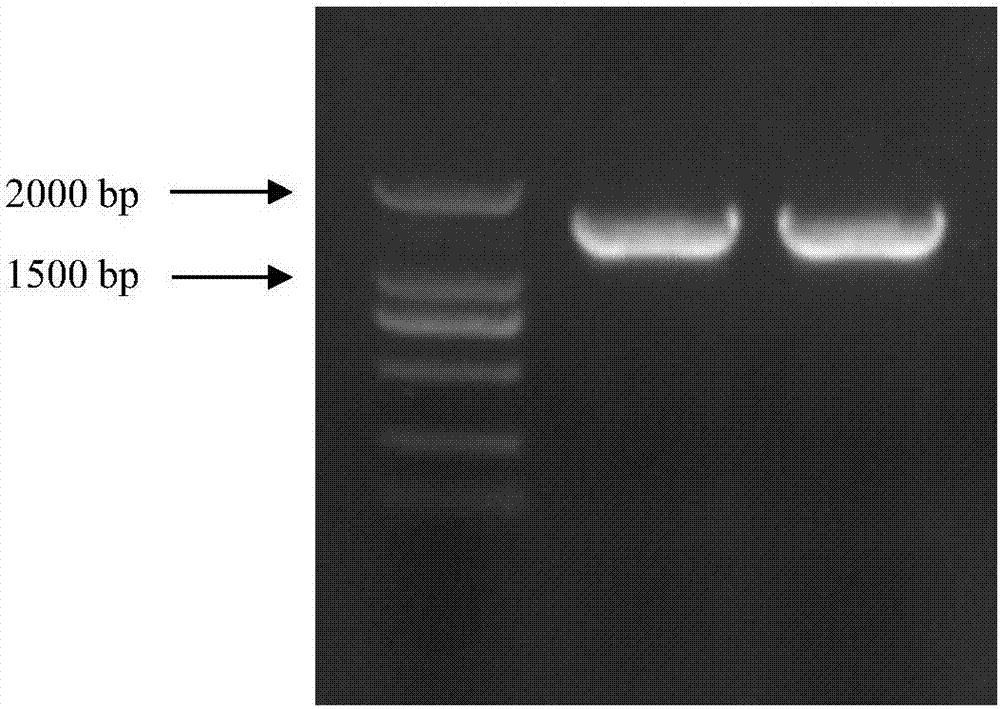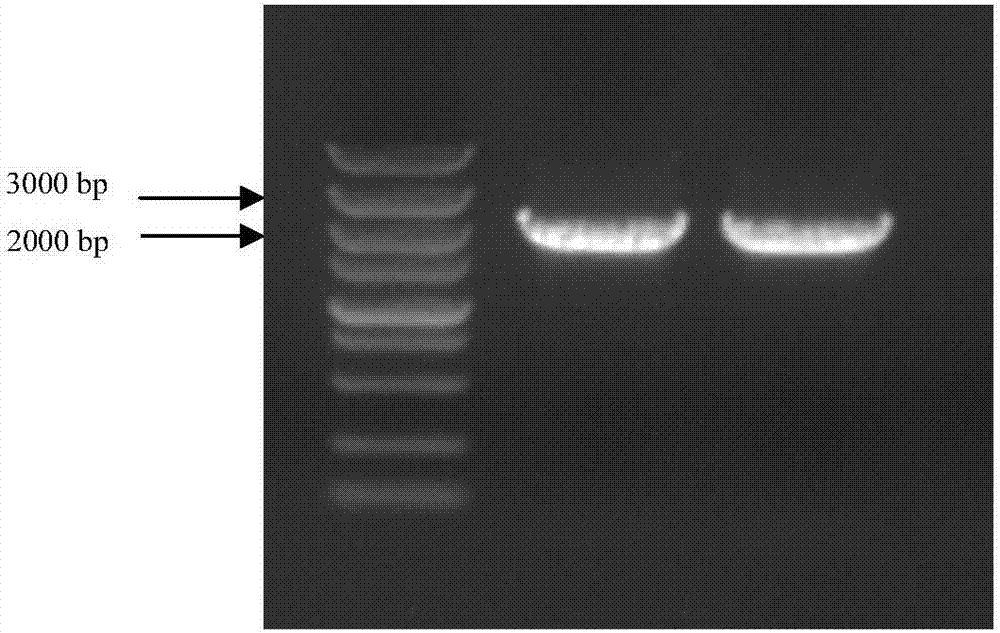White birch SPL2 gene participating plant morphogenesis and floral development and protein thereof
A plant morphology and genetic technology, applied in plant genetic improvement, genetic engineering, botanical equipment and methods, etc., can solve problems such as no birch SPL2 gene sequence, unclear SPL gene function, and few AtSPL gene functions. To achieve the effect of regulating flower fertility
- Summary
- Abstract
- Description
- Claims
- Application Information
AI Technical Summary
Problems solved by technology
Method used
Image
Examples
Embodiment 1
[0029] Example 1: Cloning of Betula platyphylla BpSPL2 gene
[0030] (1) Obtaining plant materials
[0031] The experimental material White birch male flowers were collected from the white birch forest of Northeast Forestry University. Immediately after collection, refrigerate to -80°C in a refrigerator for later use. (2) Extraction of birch RNA
[0032] The total RNA of Betula platyphylla was carried out using a modified CTAB method, and the purity and concentration of the total RNA were measured by agarose gel electrophoresis and UV spectrophotometer. Use ThermoScript TM RT-PCR System reverse transcription kit to synthesize the first strand of cDNA, and then use BpSPL2-F and BpSPL2-R for PCR amplification. PCR reaction system: cDNA template 1μL, 10×Buffer 5μL, dNTP (2.5mM) 4μL, positive and negative Make up 2μL (10μM) of each primer, 1μL of Taq Plus DNA polymerase, and 50μL of sterilized distilled water. PCR amplification conditions were: 94°C pre-denaturation for 5 minutes; 9...
Embodiment 2
[0037] Example 2: Construction of plant expression vector of Betula platyphylla BpSPL2 gene
[0038] (1) Using gateway technology to construct plant expression vectors, the specific steps are as follows:
[0039] a. Compare the strains carrying the entry vector pENTR-BpSPL2 and the Gateway vector pGWB5, and culture them in LB liquid medium containing 50 mg / L kanamycin and different concentrations of hygomycin (hyg) to screen the tide Practical concentration of mycin.
[0040] b. Take 2μL of plasmid pENTR-BpSPL2 and 2μL of plasmid pGWB5 in a 200μL PCR tube and mix well.
[0041] c. Put the LR ClonaseTM Enzyme II mix on ice for 2 minutes and then shake it quickly twice, each time about 2 seconds.
[0042] d. Add 1μL LR ClonaseTM Enzyme II mix to the mixed plasmid system, mix well, and centrifuge briefly.
[0043] e. Incubate at 25°C for 6h in the PCR machine.
[0044] f. Add 0.5μL of proteinase K to the reaction system to terminate the reaction, mix well and incubate at 37°C for 10 minutes...
Embodiment 3
[0047] Example 3: Functional analysis of the overexpression of Betula platyphylla BpSPL2 in Arabidopsis
[0048] (1) Cultivation of aseptic seedlings of Arabidopsis:
[0049] a) Take an appropriate amount of seeds in a centrifuge tube, add an appropriate amount of sterile distilled water, fully vortex and shake, and then leave for a short time, suck out the floating seeds and sterile water together.
[0050] b) Add 1 mL of 70% ethanol, vortex for 10 seconds to fully suspend the seeds in the ethanol solution, suck out the ethanol (the sterilization time of ethanol should not be too long, avoid the infiltration of ethanol and reduce the seed activity), add sterile ddH 2 O, shake and clean twice.
[0051] c) Add 1mL 10% sodium hypochlorite, vortex fully for 5min, centrifuge at 12000rpm for 1min, in the ultra-clean workbench, use 1mL sterile ddH 2 O, shake and wash 3-5 times until the solution in the centrifuge tube becomes colorless to reduce the impact of residual sodium hypochlorite on ...
PUM
 Login to View More
Login to View More Abstract
Description
Claims
Application Information
 Login to View More
Login to View More - R&D
- Intellectual Property
- Life Sciences
- Materials
- Tech Scout
- Unparalleled Data Quality
- Higher Quality Content
- 60% Fewer Hallucinations
Browse by: Latest US Patents, China's latest patents, Technical Efficacy Thesaurus, Application Domain, Technology Topic, Popular Technical Reports.
© 2025 PatSnap. All rights reserved.Legal|Privacy policy|Modern Slavery Act Transparency Statement|Sitemap|About US| Contact US: help@patsnap.com



